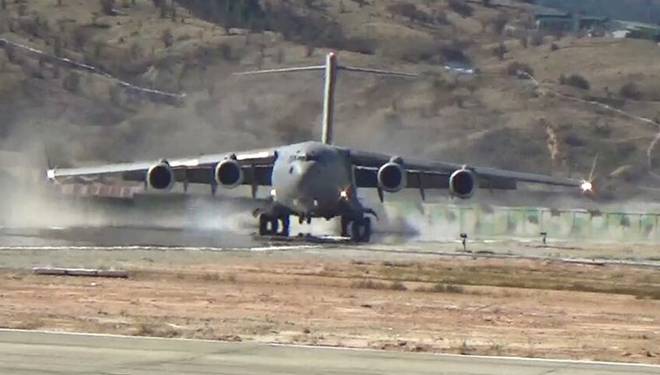As per latest reports, the Indian Army is constructing airfields in some of the areas of Uttarakhand bordering China, with the aim of improving the connectivity of the armed forces to such areas. The report further adds that the Indian Army and the Indian Air Force will help the Uttarakhand government in its efforts to boost connectivity, infrastructure and telecom facilities at areas close to the China border. Advanced landing facilities are also going to be created in high altitude areas of the state close to the China border.
Army Chief Bipin Rawat said, “When I recently met Chief Minister Trivendra Singh Rawat, he said that advanced landing grounds or airfields should be constructed in the areas bordering China. We are speedily working on it.” It must be noted that the decision to construct airfields in those areas of Uttarakhand that border China comes at a time when India is pushing for the resolution of border dispute between the two countries, while the only China has proposed an early resolution. India’s move to create airfields in Uttarakhand thus comes after China’s reluctance to move towards a comprehensive solution of the border dispute.
Advanced Landing Grounds (ALGs) are small, tactical combat airfields that increase the operational range of the fighter aircraft. The ALGs can perform multiple functions such as emergency landing strips, for supplying fuel, rations, ammunition and armament to frontline troops, and for refueling and rearming of fighter planes. And with the Ilyushin-78 midair refueller at India’s disposal, the fighter jets might not even need to land at these ALGs. They can be refueled midair thereby increasing the operational range of the fighter jets with ease. They play a crucial role during hostilities and as such are considered to be strategic force multipliers.
Ever since the Modi government came to power, it has focused upon development of ALGs along the China border. Reports of China having constructed several air bases in Tibet had come to light in the year 2013. The UPA government woke up to the importance of constructing airfields/ ALGs along the Indo-China border only after that.
Seven ALGs had been constructed in the state of Arunachal Pradesh, which is at the core of Indo-China border dispute, by the British during the Second World War. However, due to neglect of successive governments, these ALGs had become obsolete and were being used only as helipads. In fact, some of them had been even encroached upon. These ALGs were located in at Walong (eastern Arunachal), Vijaynagar (northeastern Arunachal bordering Myanmar), Tuting (northern Arunachal very close to border with Tibet), Pasighat (north-central Arunachal), Ziro (southwestern Arunachal), Aalo (central Arunachal) and Mechuka (north-central Arunachal close to Indo-Tibet border). All that the UPA government had to do was to upgrade these ALGs so that fighter jets and transport aircrafts could effectively use these ALGs. However, the UPA government failed to allocate sufficient funds for this purpose.
Ever since the Modi government came at the helm of affairs, all seven ALGs in the state of Arunachal Pradesh have been made operational while another seven are in the process of construction. The Vijaynagar Advanced Landing Ground (ALG) was the latest one to be upgraded and made operational after an AN-32 transport aircraft of the IAF landed on the Vijaynagar ALG in the month of September this year.
Earlier this year, the IAF also landed its Antonov-32 transport aircraft at Sikkim’s Pakyong airport, which is merely 60 kilometers away from the Tibet border. This was obviously seen as an expression of India’s intent to bolster its defenses in the North-eastern region.
The Modi government has been quite focused in its approach of building ALGs as a part of its strategy to bolster India’s defenses along its border with China. The upgradation and construction of ALGs does not only act as a strategic force-multiplier for the Air Force, but also for the Army. In times of hostilities, these high-value assets would be able to shelter fighter jets, transport aircrafts and helicopters. These ALGs will also help in evacuation of casualties and also supply of troops, ammunition and logistics, thereby helping in speedy mobilization of assets along the border. This explains why a lot of priority is being given to construction of ALGs along the Indo-China border.































